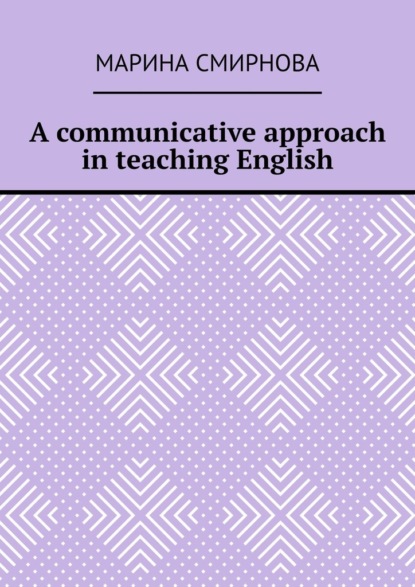По всем вопросам обращайтесь на: info@litportal.ru
(©) 2003-2024.
✖
A communicative approach in teaching English
Настройки чтения
Размер шрифта
Высота строк
Поля
– pre-tasks and introductory exercises,
– creativity and positive atmosphere.
The students are emerged into the comunictive situations through such tasks as:
– brainstorming,
– speaking and vocabulary games,
– role plays,
– discussions,
– expressing your opinion,
– reacting to relevant issues.
As for the importance of grammar, it is not diminished in a communicative approach but represented in a communicative context. The students should express their thoughts using new grammar structures and not just doing exercises and drills. Thus, we concentrate more on speech than on anything else practising a communicative approach.
The communicative methods exclude concentration on students’ mistakes and writing out and correcting everything you hear, as well as translating all the words and constructions. It provides the material in real situations and makes it possible for the students to immediately use new vocabulary and grammar in their speech.
A lesson plan
Productivity at the lesson is achieved if it is well-structured and organised. The activities at the lesson should be logically connected and refer to one lexical and grammatic topic. The amount of activities at the lesson differs from 5 to 10 depending on the age and level of students.
A good lesson structure should include:
An ice-breaking task. It should be 5—7 minutes in the beginning of the lesson to make students involved in the process and to introduce a new topic:
– questions – answers,
– a video \ song with gap-filling and eliciting the topic of today’s lesson,
– cards with actions to show your partner, choose and guess the word (from new words or pictures),
– checking homework (may be done before an ice-breaker).
The introdution of a new topic. About 10 minutes.
– Vocabulary is introduced through cards, images, definitions, games.
– Grammar is introduced in the context through games, questions \ answers, composing sentences under the model, finding structures in the text and eliciting the meaning.
Pre-tasks. 5 minutes: tasks to pre-teach the vocabulary, structures or ideas expressed in the following reading, listening, a video. Among the tasks there may be:
– questions,
– discussion «for \ against»,
– games,
– guesses what the topic is,
– finding opposites \ synonyms, etc.
The main task. Practising new vocabulary and grammar. 10—15 minutes:
– reading, listening or a video can be the main task representing new material including the topic, vocabulary and grammatic structures,
– drilling (filling in the gaps, matching tasks, composing sentences putting words in the correct order, finding words with the given meaning, choosing between several options, multiple choice tasks) can be done to check the understanding of the vocabulary and grammar from the main task.
Post-tasks. 5—10 minutes.
The students should reproduce what they have read, listened to, watched, – and speak on the topic, compose dialogues (even using the samples), express their opinion, make a role play, agree or disagree, etc.
The final part. 3—4 minutes.
– Mistakes correction: on the board the main mistakes made by the students are written down.
– The home task is also written down on the board and explained by a teacher if necessary.
Here is the example of a lesson plan. It’s convenient to complete a chart with it for better comprehension.
How to speak English only
What typical problems does a teacher have to tackle while speaking only English at the lesson?
– Speaking English with young learners who are not prepared and can’t understand any information yet.
– With beginners the problem is the same as with young learners.
– Reacting to their Russian – students tend to speak Russian when they know their teacher is not a native speaker.
– Simplifying – a teacher needs to learn how to simplify their speech to make it comprehensive for the students of low levels.
– Pacing – a gradual presentation of the material.
– Using supplementary materials – there are a lot of them to visualise new vocabulary.
The solutions for these problems may be:
For young learners:
– prepare the materials supporting new words visually: cards, images, presentations, toys, puppets.
– Use a lot of gestures and facial mimicry, show actions with your movements, don’t be shy to act and play together with them.
– Try to use simple language, do not paraphrase commands (let’s say together – should always be the same, don’t change it into «let’s repeat, or repeat after me…»)






